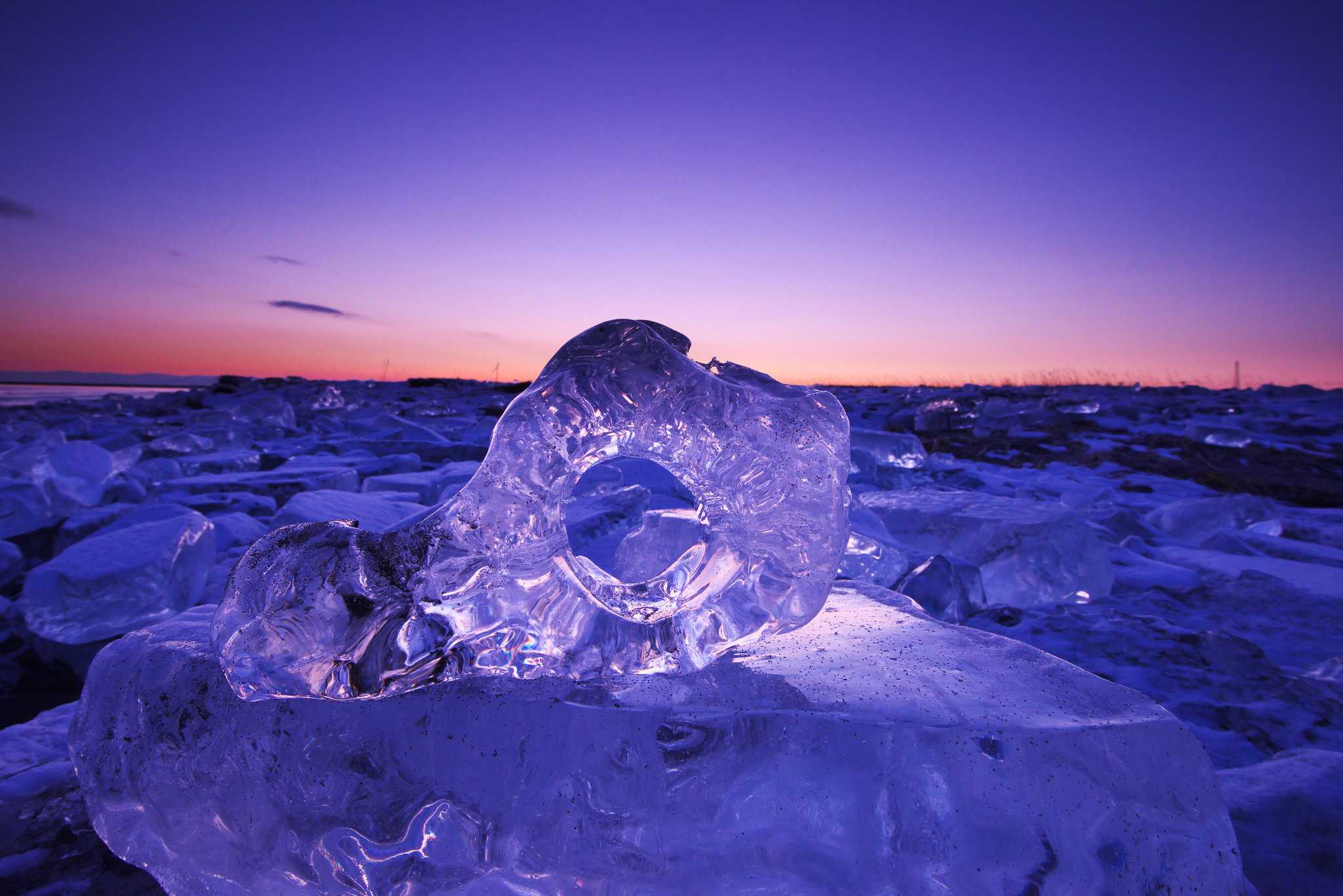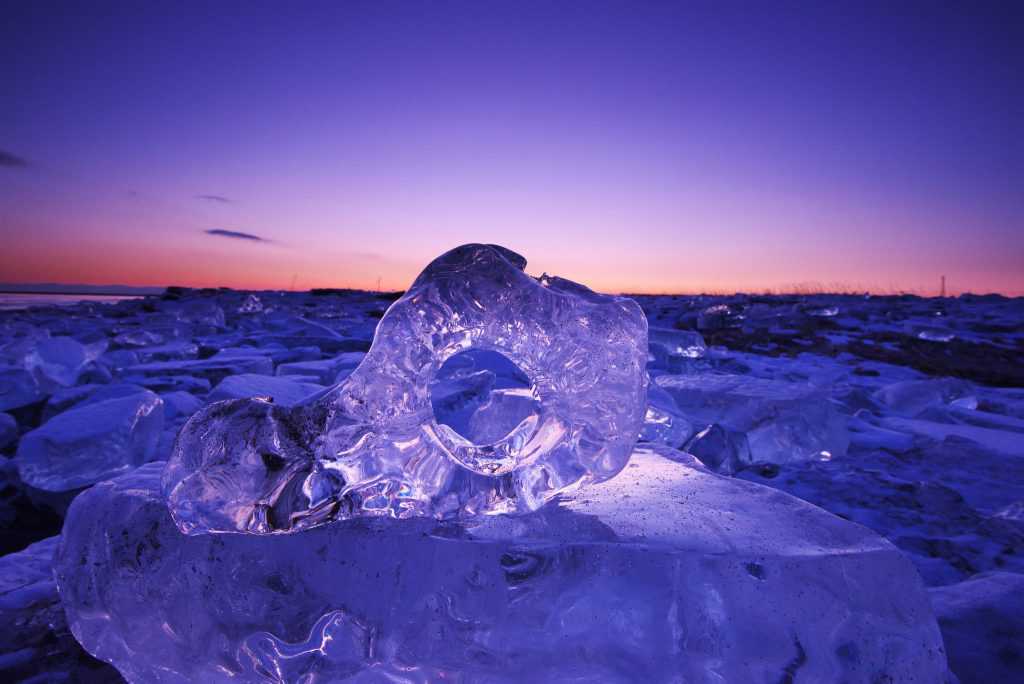
Large lumps scatter across a beach at the mouth of the Tokachi River on Hokkaido, the northern island of Japan. They shine like diamonds beneath evening moon beams and glow like amber under a setting sun.
At first glance, the scene looks like the remnants of a giant’s jewel heist gone wrong. But these glistening gems are just ice chunks, spit out by the river and tumbled by ocean waves. They’re called Tokachi river ice, jewelry ice or jewel ice, and they appear only here, and only during the coldest winter months.
“I had never heard of this type of ice and have never seen any sea ice like it,” wrote Peter Wadhams, an ocean physicist at the University of Cambridge who studies polar oceans and sea ice. “It’s just river ice, which is transparent because it has no salt in it.”
Large lumps scatter across a beach at the mouth of the Tokachi River on Hokkaido, the northern island of Japan. They shine like diamonds beneath evening moon beams and glow like amber under a setting sun. At first glance, the scene looks like the remnants of a giant’s jewel heist gone wrong. But these glistening gems are just ice chunks, spit out by the river and tumbled by ocean waves. They’re called Tokachi river ice, jewelry ice or jewel ice, and they appear only here, and only during the coldest winter months.
“I had never heard of this type of ice and have never seen any sea ice like it,” wrote Peter Wadhams, an ocean physicist at the University of Cambridge who studies polar oceans and sea ice. “It’s just river ice, which is transparent because it has no salt in it.”

When temperatures are well below freezing, the mouth of the crystal-clear river freezes over. The ice breaks into chunks that float out into the frigid ocean and then wash up on shore. There, the polished blocks accumulate and eventually melt into the sand. Their beauty has garnered increasing attention from locals and tourists. And after a photographer shot it and called it “jewelry ice” in 2015, more photographers have spilled in each winter since to capture the sparkling spectacle before it melts away. They have been posting their shots on social media.
It’s the same type of hexagonal ice that snow crystals are made of, said Werner F. Kuhs, an ice chemist and physicist who in 2014 invented his own kind of ice, called Ice XVI, with totally different properties.

“Usually lake or river ice is not that transparent, as numerous small air bubbles are formed inside the ice upon freezing,” Dr. Kuhs said. But occasionally, he added, “larger portions of the ice can grow bubble-free with the air accumulated in separated portions; in fact, some larger bubbles are seen in some of the enlarged ‘jewel’ crystals.”
This may be the only spot to find this kind of river ice, but you can probably spot glacier ice that looks similar in southern Chilean fjords or Alaskan panhandle inlets, Dr. Wadhams said.
The best time to see jewelry ice is in January or February. And the optimal time of day depends on what colors you want to see. As the sun rises and sets, the ice appears orange. During the day, it’s blue. Jewel ice can also appear sapphire, topaz or opal, depending on the sky. In Toyokoro, the town where the ice shows up, locals go to the beach and post frequent updates about the state of the ice on Toyokoro’s website. The last update, posted on Jan. 25, revealed that the temperature was minus 11 degrees Fahrenheit and the ice was covered in snow.
We’re interested in your feedback on this page. Tell us what you think.




























